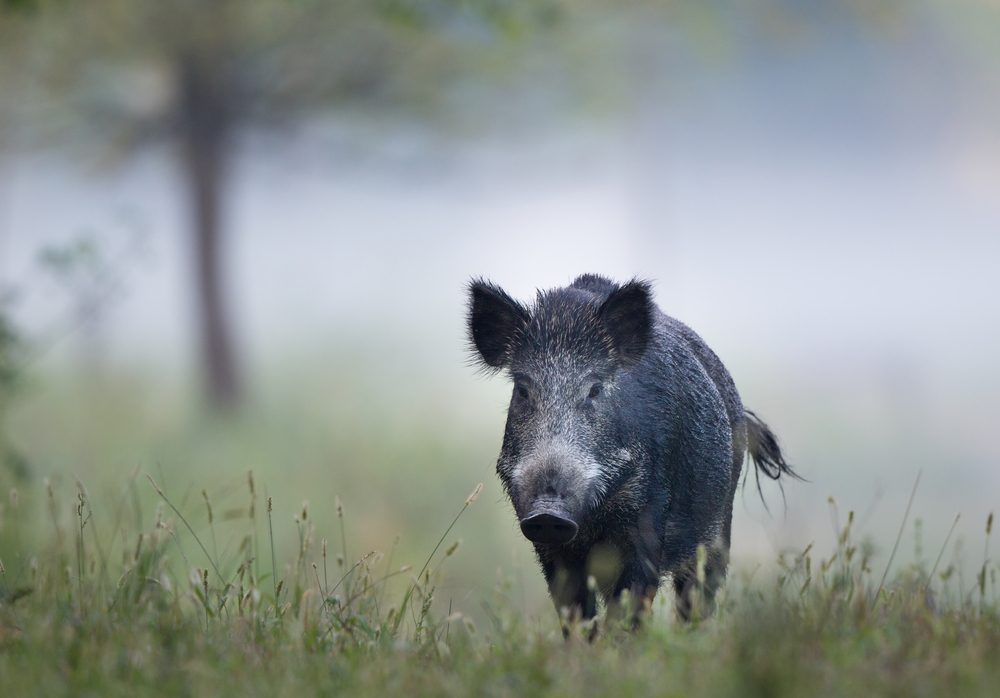They can reach five feet in length, grow to 400 pounds, and run 30 miles per hour. They’re tusked, hairy, sharp-toothed, and aggressive. They’ll eat nearly anything and they have no major natural predators.
Call them feral swine, wild boar, wild hogs, or razorbacks: they are one of the most destructive invasive animal species in the U.S., and they are spreading to more and more of the country as time goes by.
European settlers first brought Sus scrofa—the species that includes both domestic pigs and wild hogs—to what is now the continental U.S. in the 1500s as a food source. As settlers expanded into the U.S., pigs occasionally escaped captivity, where they returned to their wild roots. Subsequently, in the 1900s, European or Russian boars were introduced to the U.S. for sport hunting. Interbreeding between escaped domestic pigs and boars has created hybrids with the strongest characteristics of each.
Wild hogs have several qualities that have allowed the species to take hold. Allowed to graze freely in the wild, feral swine can grow to larger sizes than domesticated pigs with controlled diets. Attributes like intelligence and a strong sense of smell allow wild hogs to survive well in the wild. Because they do not have substantial predators outside of humans and can live comfortably in a variety of climates, there is little to stop their continued spread.
Perhaps most significantly, wild hogs are very fertile. Each litter of newborn hogs averages around five offspring but can reach as many as 12, and sows can give birth to a litter up to twice per year. In sum, the species’ strength and rapid reproductive rate have led to exponential population growth.
Geographical Spread of Feral Pigs

In recent years, the result has been a significantly increased range for feral pigs across the United States. Four decades ago, feral swine had a presence in only 20 states, primarily in the South. Over time, that figure has grown to 36 states as the animal’s range has expanded more westward and northward. And feral pigs’ presence has expanded within states as well. The number of counties affected by wild hogs has nearly tripled since the early 1980s, from 550 in 1982 to 1,496 in 2023.
Wild hogs’ expansion across the U.S. is no mere inconvenience. According to the U.S. Department of Agriculture, hogs cause approximately $2.5 billion in damages each year by rooting and trampling farm and forest lands, eating crops, and transmitting diseases and parasites.
In the face of this “feral swine bomb,” landowners, governments, experts, and others have responded with a variety of mitigation tactics—to varying success. One of the most popular among the public is hunting, which has grown into a common recreational activity and is only lightly regulated in many states. However, the strategy has limited effectiveness, as hogs often relocate in response to hunting pressure. Fencing and trapping tend to be the most effective, but require more upkeep and investment to work well at scale. And while there has been extensive research into pharmaceutical controls, the U.S. currently has no approved legal poisons for hogs.
As the wild hog problem continues to grow, some states will face greater challenges than others. While states like California and Hawaii have fairly large feral hog populations, wild hogs are unquestionably most common in the southern U.S. Most states in the South have experienced hog sightings in at least 90% of their counties, and collectively southern states are responsible for the overwhelming majority of feral hog reports.
The data used in this study is from the University of Georgia Center for Invasive Species and Ecosystem Health. To determine the states with the biggest wild hog problem, researchers at Captain Experiences calculated the number of feral hog sightings reported in each state. In the event of a tie, the state with the greater percentage of counties with feral hogs was ranked higher.
Here are the states with the biggest wild hog problem.
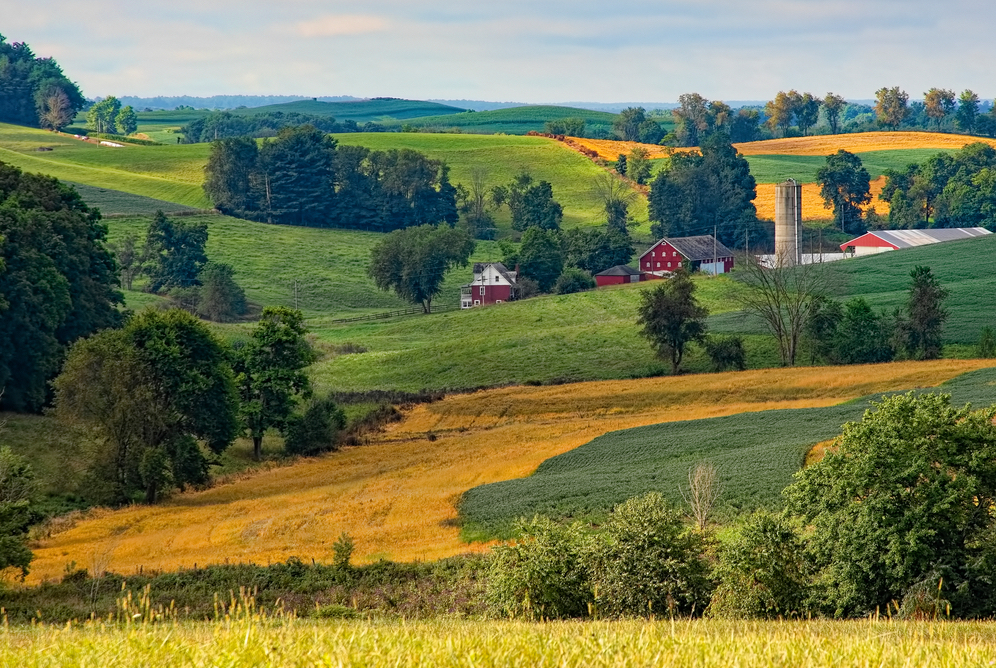
Photo Credit: Ronald E Grafe / Shutterstock
15. Ohio
- Number of feral hog reports: 102
- Percentage of counties with feral hogs: 23.9%
- Number of counties with feral hogs: 21
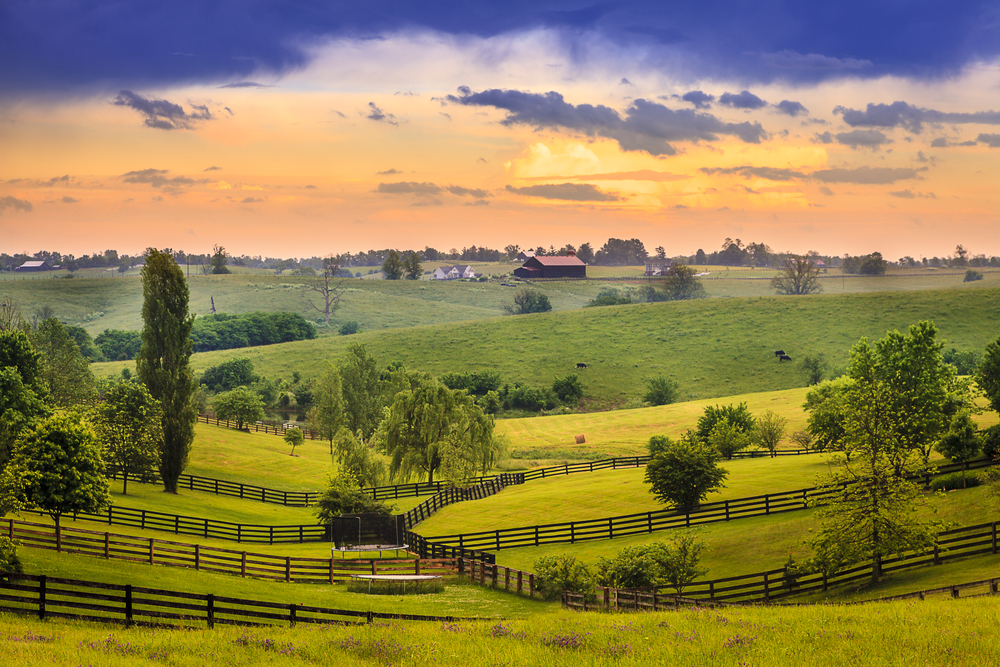
Photo Credit: Alexey Stiop / Shutterstock
14. Kentucky
- Number of feral hog reports: 310
- Percentage of counties with feral hogs: 67.5%
- Number of counties with feral hogs: 81
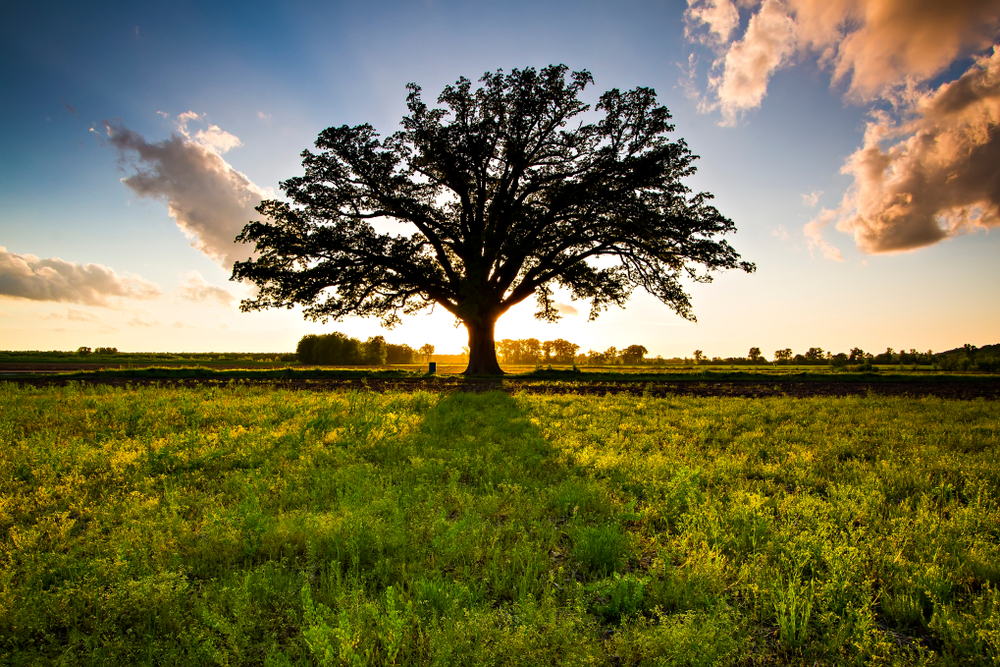
Photo Credit: Kyle Spradley Photography / Shutterstock
13. Missouri
- Number of feral hog reports: 336
- Percentage of counties with feral hogs: 53.9%
- Number of counties with feral hogs: 62

Photo Credit: Nate Rosso / Shutterstock
12. South Carolina
- Number of feral hog reports: 423
- Percentage of counties with feral hogs: 100.0%
- Number of counties with feral hogs: 46

Photo Credit: Anthony Heflin / Shutterstock
11. Tennessee
- Number of feral hog reports: 488
- Percentage of counties with feral hogs: 87.4%
- Number of counties with feral hogs: 83

Photo Credit: veeterzy / Shutterstock
10. California
- Number of feral hog reports: 563
- Percentage of counties with feral hogs: 100.0%
- Number of counties with feral hogs: 58
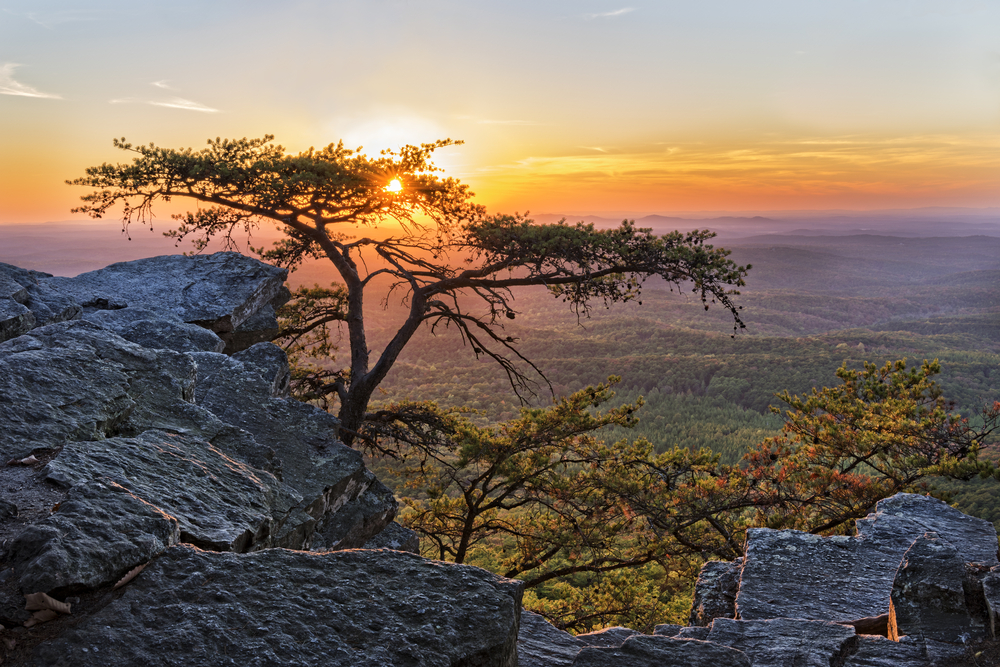
Photo Credit: Jim Vallee / Shutterstock
9. Alabama
- Number of feral hog reports: 590
- Percentage of counties with feral hogs: 100.0%
- Number of counties with feral hogs: 67

Photo Credit: Nathan Peachman / Shutterstock
8. Louisiana
- Number of feral hog reports: 613
- Percentage of counties with feral hogs: 98.4%
- Number of counties with feral hogs: 63
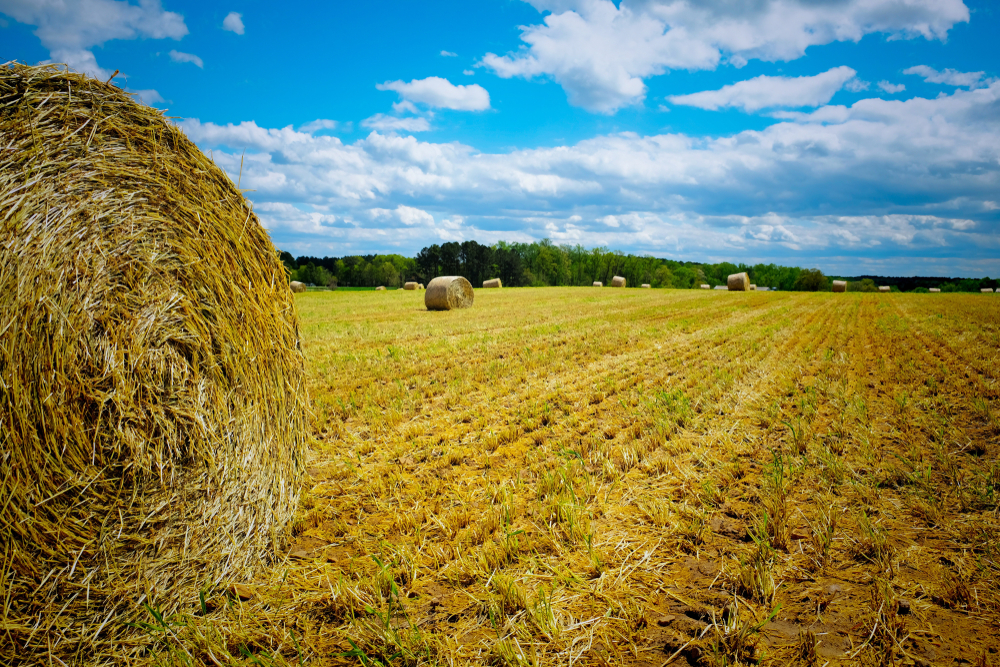
Photo Credit: samray / Shutterstock
7. North Carolina
- Number of feral hog reports: 655
- Percentage of counties with feral hogs: 85.0%
- Number of counties with feral hogs: 85
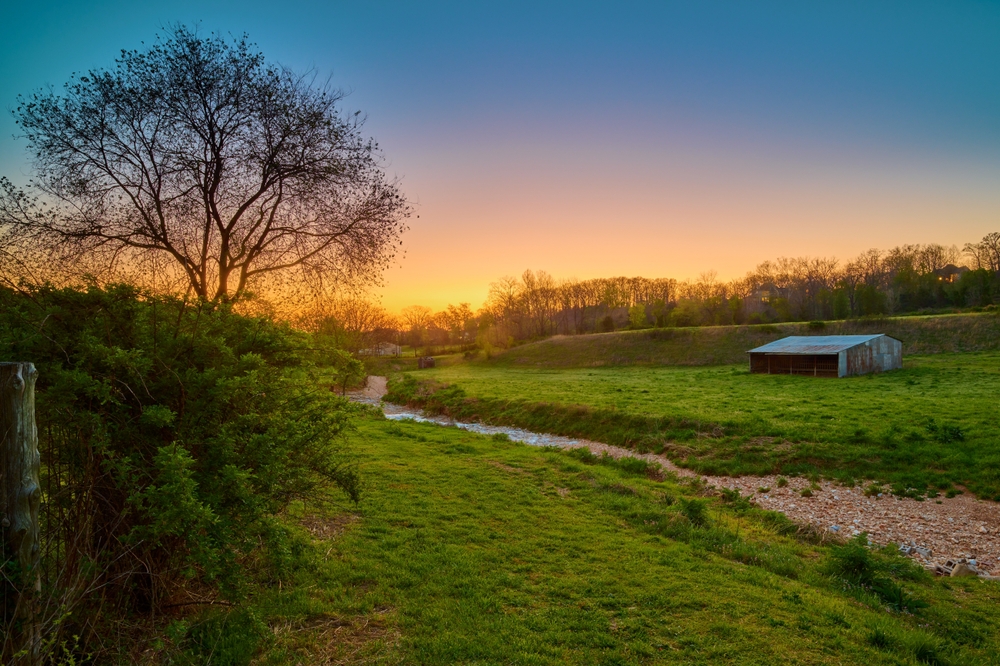
Photo Credit: Patrick Jennings / Shutterstock
6. Arkansas
- Number of feral hog reports: 657
- Percentage of counties with feral hogs: 98.7%
- Number of counties with feral hogs: 74

Photo Credit: ungvar / Shutterstock
5. Oklahoma
- Number of feral hog reports: 665
- Percentage of counties with feral hogs: 98.7%
- Number of counties with feral hogs: 76

Photo Credit: traveler jordan / Shutterstock
4. Mississippi
- Number of feral hog reports: 731
- Percentage of counties with feral hogs: 100.0%
- Number of counties with feral hogs: 82

Photo Credit: Brian Szuba / Shutterstock
3. Florida
- Number of feral hog reports: 1,193
- Percentage of counties with feral hogs: 100.0%
- Number of counties with feral hogs: 67

Photo Credit: Tonya Crawford / Shutterstock
2. Georgia
- Number of feral hog reports: 1,377
- Percentage of counties with feral hogs: 100.0%
- Number of counties with feral hogs: 159
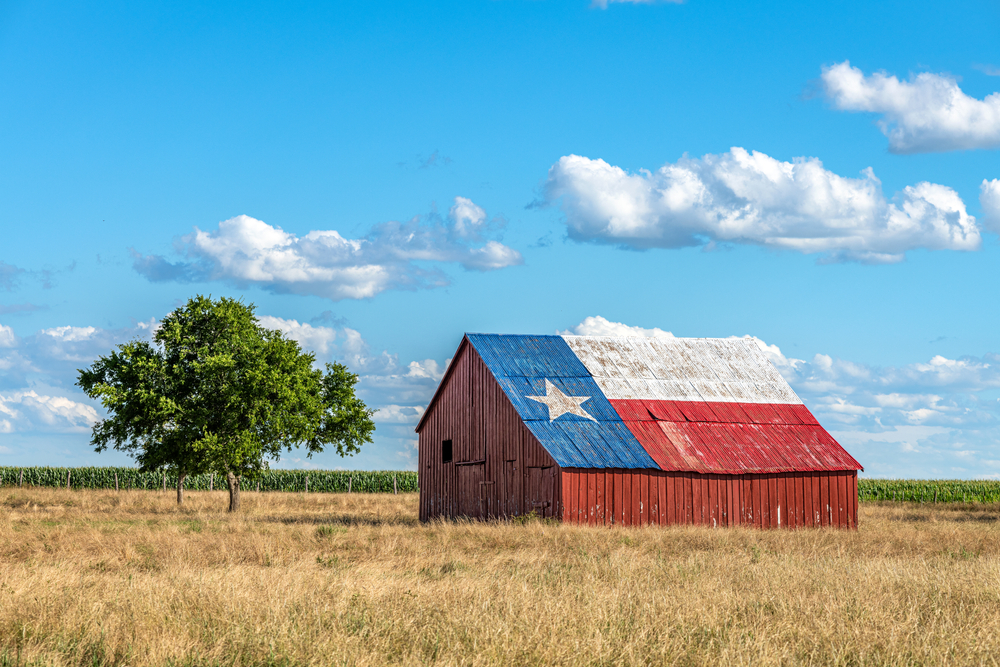
Photo Credit: Joe Belanger / Shutterstock
1. Texas
- Number of feral hog reports: 2,425
- Percentage of counties with feral hogs: 99.6%
- Number of counties with feral hogs: 253
Methodology & Detailed Findings
The data used in this study is from the University of Georgia Center for Invasive Species and Ecosystem Health’s Early Detection & Distribution Mapping System (EDDMapS). To determine the states with the biggest wild hog problem, researchers at Captain Experiences calculated the number of feral hog sightings reported in each state since EDDMapS began tracking data. In the event of a tie, the state with the greater percentage of counties with feral hogs was ranked higher.
For complete results, see States With the Biggest Wild Hog Problem on Captain Experiences.

